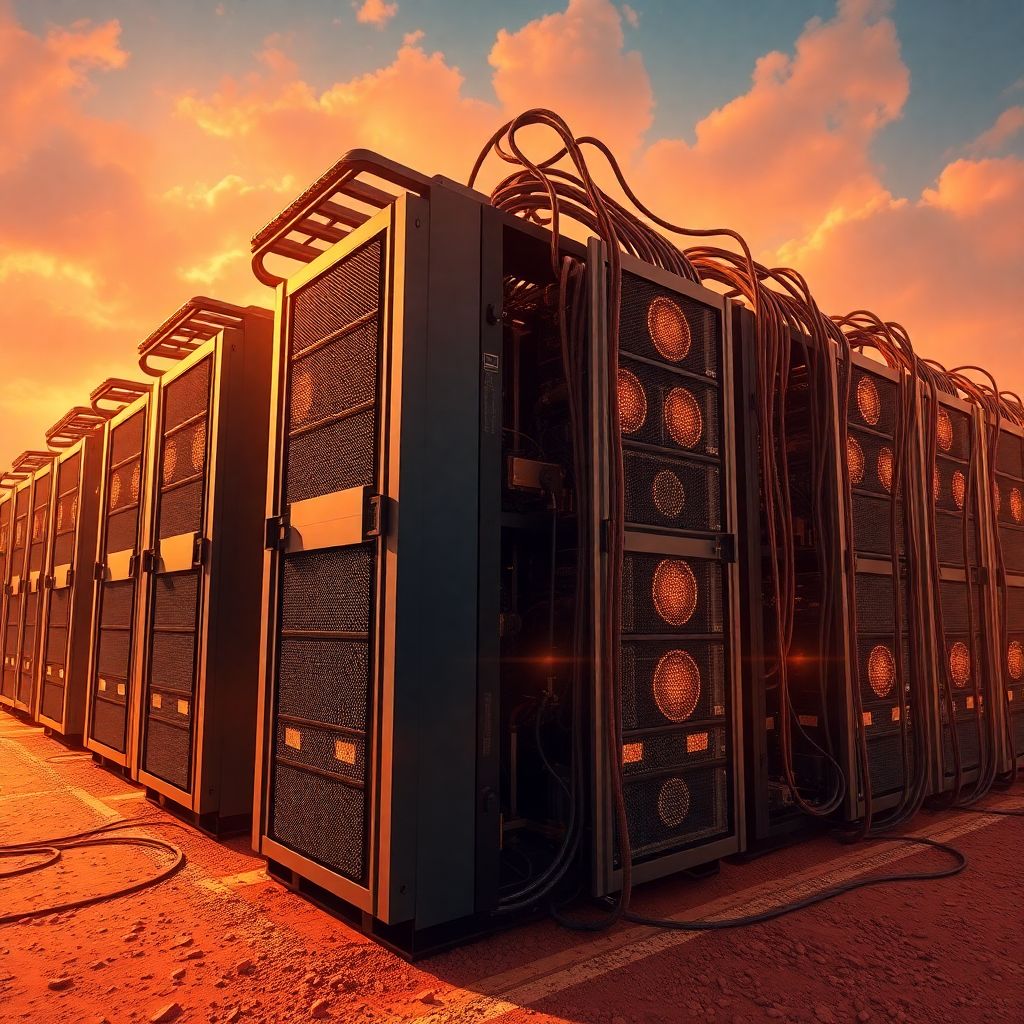Bitcoin miners are undergoing a profound transformation, shifting from their traditional role in cryptocurrency validation to becoming critical infrastructure providers for the booming artificial intelligence (AI) sector. This pivot is not only reshaping their business models but also generating billions in revenue and attracting high-profile partnerships with major tech firms. As the demand for advanced computing surges, miners find themselves uniquely positioned to capitalize on this digital evolution, leveraging years of investment in power, cooling, and data-handling infrastructure.
The catalyst for this shift lies in the decreasing profitability of traditional Bitcoin mining. Following the halving event in April 2024, which cut mining rewards in half, many firms found their margins severely compressed. This economic pressure forced several companies to reevaluate their strategies. A notable example is IREN, formerly Iris Energy, which initially saw its stock plummet before rebounding dramatically after repositioning itself toward AI-focused services. Since its rebranding in November 2024, IREN’s stock has skyrocketed by more than 580%, underscoring the market’s enthusiasm for this new direction.
Other mining firms have followed suit, with Riot Platforms, TeraWulf, and Cipher Mining posting impressive stock gains ranging from 100% to 360%. These moves signal a broader industry trend: mining firms no longer see themselves as solely dependent on Bitcoin. Instead, they are embracing a more diversified role as providers of high-performance computing (HPC) infrastructure, particularly for AI workloads.
What makes miners particularly valuable in this context is their existing infrastructure. Over the years, they’ve built massive facilities optimized for power consumption and thermal regulation—two crucial components for running sophisticated AI models. Unlike traditional data centers, which require years to design, build, and optimize, Bitcoin mining operations can be repurposed relatively quickly to serve AI clients. Analysts now view this as a textbook case of strategic adaptability, where a sector facing obsolescence reinvents itself by aligning with emergent technological needs.
The transformation was solidified by a landmark deal between IREN and Microsoft. In a $9.7 billion agreement, Microsoft secured access to data center capacity in Texas, powered by IREN’s infrastructure. Another $5.8 billion deal with Dell for GPU deliveries further cemented IREN’s position in the AI supply chain. These agreements not only validate the miners’ new direction but also signal to the broader market that computational infrastructure is now as critical as the algorithms themselves.
HIVE Digital Technologies is another major player riding this wave. The company has expanded its operations to a 32.5-acre site in New Brunswick, where it’s constructing a Tier III+ HPC campus designed to host more than 25,000 next-gen GPUs, all powered by renewable energy. HIVE’s global Bitcoin mining capacity has surged to 23 EH/s, and its pivot to AI services illustrates how miners are fusing sustainability with next-generation computing.
The shift hasn’t gone unnoticed by other technology giants. Amazon is reportedly exploring similar deals with mining firms to secure GPU and compute capacity. The reasoning is simple: demand for AI training and inference is exploding, and conventional data centers can’t keep up. They often take years to build and face numerous logistical hurdles. In contrast, miners already possess many of the essentials—robust electrical infrastructure, cooling systems, and operational expertise in managing high-density computing environments.
As AI models become more complex and data-hungry, the need for immediate and scalable compute power grows exponentially. This has led investors to re-evaluate how they assess tech infrastructure companies. Metrics like GPU allocations, megawatt capacity, and cooling capabilities are increasingly more relevant than traditional indicators like Bitcoin hashrate.
This evolution represents more than just a business shift—it marks the birth of a new digital energy economy. Miners are no longer just processing blocks on the blockchain; they are becoming foundational players in a world where energy and computation converge. Their ability to supply massive amounts of power-intensive computing on demand makes them indispensable to AI firms racing to develop ever-more capable models.
Moreover, geopolitical factors are adding fuel to this transformation. The U.S. government’s restrictions on the export of advanced Nvidia chips have inadvertently provided domestic miners with a competitive edge, making them preferred partners for American tech companies that require onshore compute capacity. This policy backdrop enhances the strategic value of U.S.-based mining operations, especially as nations seek to secure their digital sovereignty.
The convergence of Bitcoin mining and AI is also prompting new forms of innovation. Startups like PepeNode are reimagining what mining can be in the context of AI and Web3, blending decentralized computing concepts with enterprise-grade infrastructure. While these ventures carry risk, they also offer enormous upside if they can successfully bridge the gap between crypto-native technologies and mainstream AI use cases.
Looking ahead, industry analysts predict that this hybridization of mining and AI will only accelerate. The rise of generative AI, real-time data analytics, and edge computing will further intensify the need for distributed, high-performance infrastructure. Miners who can pivot quickly and form strategic alliances will not only survive but potentially dominate the next phase of digital transformation.
In this new landscape, energy efficiency, scalability, and real-time availability are the currencies of power. Bitcoin miners, once seen as energy hogs feeding a speculative asset, are now being rebranded as essential service providers for the AI era. The market is rewarding this transformation—not just with stock gains, but with long-term strategic partnerships that could redefine the role of infrastructure in the 21st century.
As the lines between crypto, AI, and cloud computing continue to blur, one thing is clear: the future belongs to those who can adapt. Bitcoin miners have shown they are more than up to the task.

